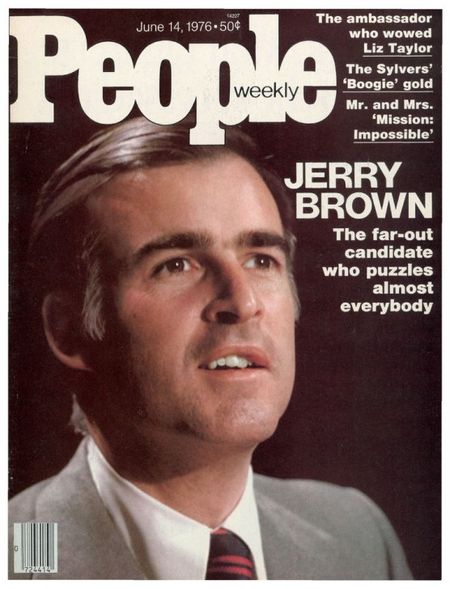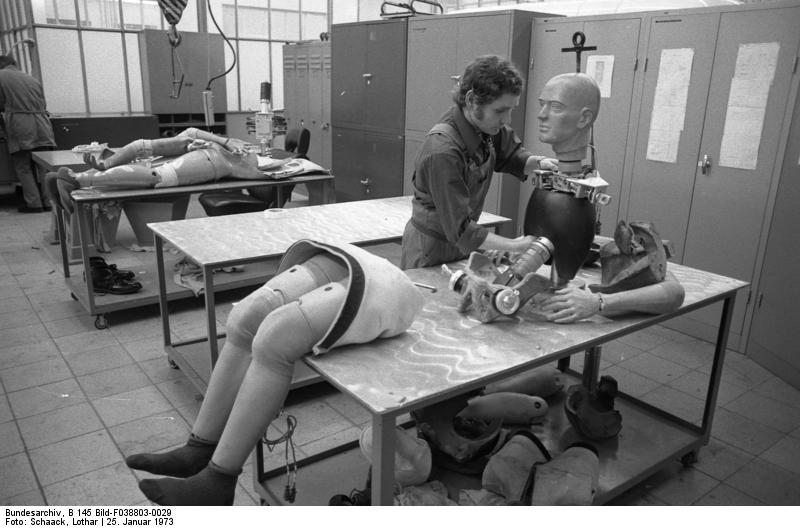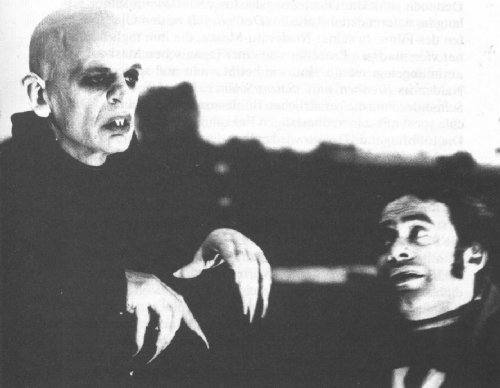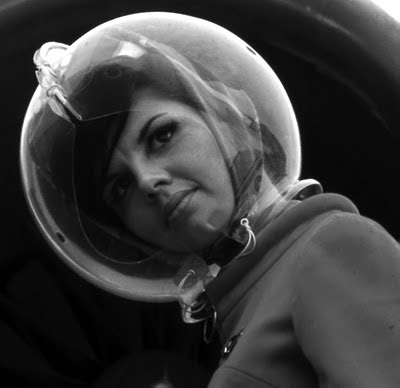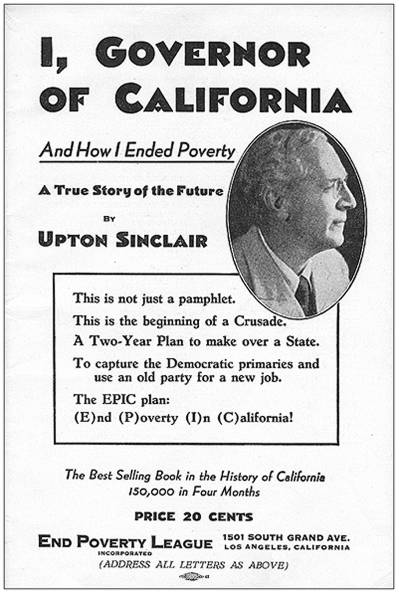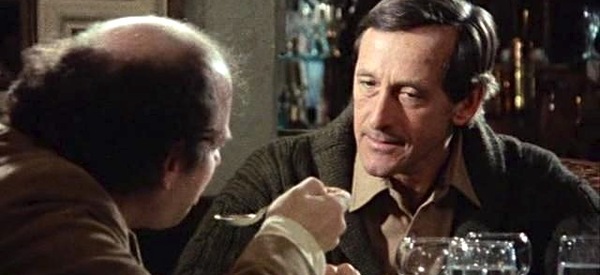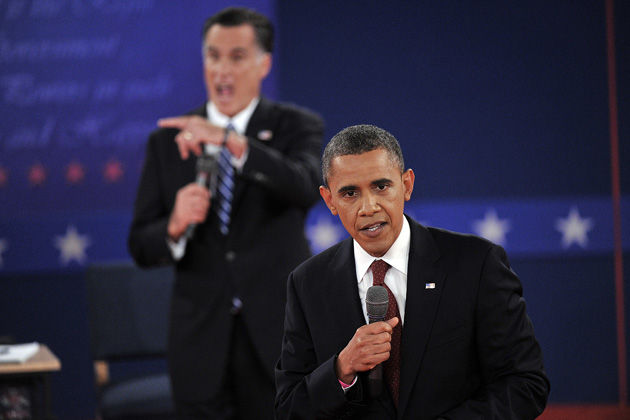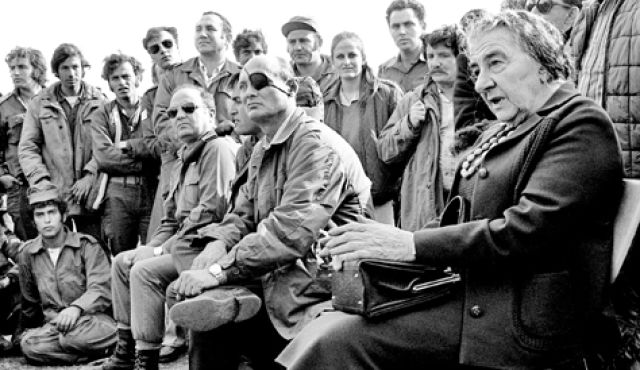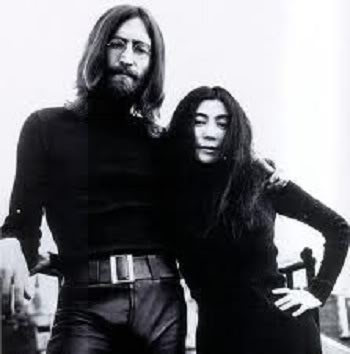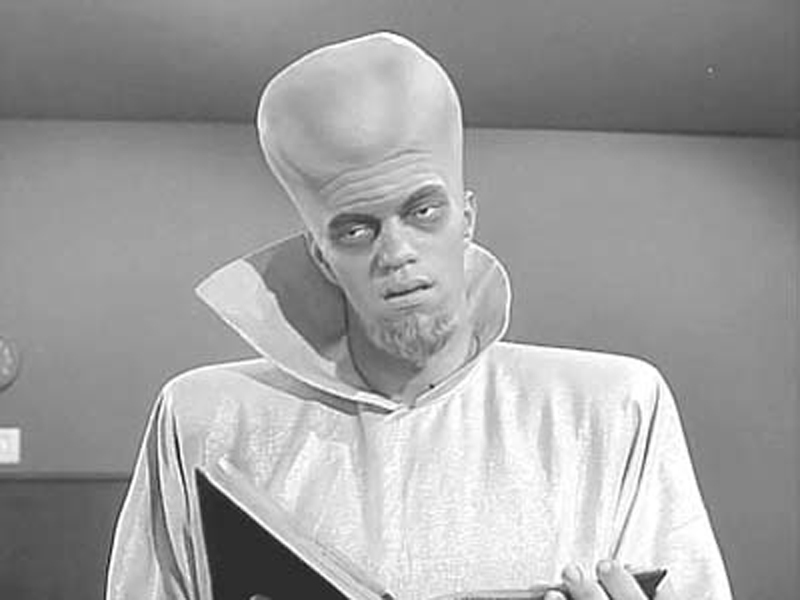Jerry Brown, during his his hippie-ish “Governor Moonbeam” days in 1981, chatting with Merv Griffin. Of course, he’s also the current California Governor. I have never understood exactly where Brown is coming from, what his core is, and I doubt he could articulate it very well, either. But that amorphousness hasn’t prevented him achieving successful governance.
You are currently browsing the archive for the Videos category.
Tags: Jerry Brown, Merv Griffin
Really good segment from a 1970 episode of BBC’s Tomorrow’s World about the advent of computer animation.
Tags: Stan Hayward
DARPA, man’s best friend, offers footage of the Pet-Proto in action. From the official literature: “The Pet-Proto, a predecessor to DARPA’s Atlas robot, is confronted with obstacles similar to those robots might face in the DARPA Robotics Challenge (DRC). To maneuver over and around the obstacles, the robot exercises capabilities including autonomous decision-making, dismounted mobility and dexterity.”
Werner Herzog, one of my favorite filmmakers, discussing my least favorite Werner Herzog film, Nosferatu the Vampyre. Maybe I need to give this updating of German Expressionism another chance. Or perhaps it would have been better if he’d cast Fred Astaire as a stupid, stupid vampire. (Thanks Biblioklept.)
Tags: Werner Herzog
Tags: Bryant Gumbel, John Updike
A 1979 report on Bob Marley and reggae culture from the Australian version of 60 Minutes. Fairly dumb piece, but lots of good footage of Marley two years before his death, and some of guys smoking what appears to be a telephone receiver bong.
Tags: Bob Marley
A brainwave-sensing headband from InteraXon. (Thanks Kurzwei AI.)
Here’s an oddity I never knew existed until now. In 1975, seven years after making the landmark horror film Night of the Living Dead, George A. Romero directed a serious documentary about old timey pro wrestler Bruno Sammartino. The connection seems to be that they both lived in Pittsburgh. (Romero also did a TV film about Pittsburgh Pirate Willie Stargell in the ’70s.) The following year, Romero released Martin, his eerie, moving allegory of soldiers returning from Vietnam with Post-Traumatic Stress Disorder.
Tags: Bruno Sammartino, George A. Romero
It’s hard to imagine that Upton Sinclair would have made a very good California governor in 1934, but he never had a fair shot thanks to the birth of the modern smear ad. From a Smithsonian post about the dirty race which saw the writer’s populist campaign undone by Hollywood filmmakers:
“Nothing matched the impact of the three ‘newsreels’ produced by Irving Thalberg, the boy wonder of the motion picture business, who partnered with Louis B. Mayer and helped create Metro Goldwyn Mayer while still in his early twenties. Mayer had vowed to do everything in his power to stop Sinclair, even threatening to support the film industry’s move to Florida if the socialist were elected governor. Like the other studios, MGM docked its employees (including stars) a day’s pay and sent the money to [Frank] Merriam’s campaign.
Using stock images from past movies and interviews by an ‘inquiring cameraman,’ Thalberg produced alleged newsreels in which actors, posing as regular citizens, delivered lines that had been written to destroy Sinclair. Some actors were portrayed as reasonable Merriam supporters, while others claiming to be for Sinclair were shown in the worst light.
‘I’m going to vote for Upton Sinclair,’ a man said, standing before a microphone.
‘Will you tell us why?’ the cameraman asked.
‘Upton Sinclair is the author of the Russian government and it worked out very well there, and I think it should do here.’
A young woman said, ‘I just graduated from school last year and Sinclair says that our school system is rotten, and I know that this isn’t true, and I’ve been able to find a good position during this Depression and I’d like to be able to keep it.’
An African-American man added, ‘I’m going to vote for Merriam because I need prosperity.’
The inquiring cameraman also claimed to have interviewed more than 30 ‘bums’ who, he claimed, were part of a wave of unemployed workers ‘flocking’ to California because of Sinclair’s plan. Stock footage showed such ‘bums’ hopping off packed freight trains. (Unemployed people did move to California, but did not pose the social and economic burdens implied by the newsreel.)
Greg Mitchell, author of The Campaign of the Century, wrote that the newsreels devastated Sinclair’s campaign. ‘People were not used to them,’ Mitchell stated. ‘It was the birth of the modern attack ad. People weren’t used to going into a movie theater and seeing newsreels that took a real political line. They believed everything that was in the newsreels.'”
Tags: Upton Sinclair
Silly 1984 TV ad featuring John Cleese for a “portable” Compaq computer which weighed 22 pounds. (Thanks Singularity Hub.)
Tags: John Cleese
From a 1979 People article about the auto-racing exploits of Est scream machine Werner Erhard, who has always been a piece of work:
“For hours mechanics have been fine-tuning the squat red-and-silver race car, while assistants check their clipboards and keep the Watkins Glen (N.Y.) bivouac free of litter and strangers. One fan wanders through in a T-shirt with the baffling slogan: ‘Before I was different, now I’m the same.’ Presently the driver emerges from an enormous van, astronaut-like in his creamy flame-proof suit, and heads for the Formula Super Vee racer (named for its Volkswagen engine). At the wave of a flag he will roar around a 3.3-mile Grand Prix course at speeds up to 130 mph.
There are 29 other qualifiers in this Gold Cup event, but only driver Werner Erhard claims he is here for the sake of mankind. Erhard, the founder of est (Erhard seminars training), says that when he slides into his 164-horsepower Argo JM4, he is raising consciousness, not merely dust.
‘Real people—you and me—feel like they don’t make any difference in this lousy world,’ says the 43-year-old Erhard. He is tall and loose-limbed with icy blue eyes; he insists on eye contact during a conversation. If his listener looks away, even momentarily, Erhard stops talking. He wants everyone to understand why he is driving fast cars these days in addition to heading the $20 million business that est has become, plus a 1977 spin-off, his program ‘to end world hunger by 1997.’ ‘I wanted to organize a high-performance team,’ Erhard continues, ‘that could master a complex skill in a very short time with winning results and show that everyone involved makes a big difference, from grease monkeys to spectators.’ In order to prove this estian point, Erhard says he considered such adventures as skydiving and karate, but rejected them as not collective enough. ‘Auto racing was perfect!’ he exclaims. ‘I hadn’t driven a car in six years and didn’t know the first thing about racing. Whatever we’d achieve, we’d achieve together.'”
••••••••••
“I found it a remarkable technology”:
See also:
Tags: Werner Erhard
In 1973, Mike Wallace did a 60 Minutes report on the tabloidization of local TV news, focusing on a highly rated San Francisco station that sold happy talk, sensationalism, stunt journalism and lurid sex. Much of the culture drifted in that same general direction, even Wallace and 60 Minutes sometimes. Democracy guarantees the freedom to be great, but not greatness.
Tags: Mike Wallace
I posted a video of SEALAB I. Here’s one from 1966 of SEALAB II, in which ten aquanauts lived in an underwater habitat. One of them was Mercury astronaut Scott Carpenter.
Tags: Scott Carpenter
I didn’t know until now about filmmaker Cindy Kleine’s Kickstarter campaign to raise money for a documentary about her husband, André Gregory, but I’m glad she reached her goal. I’m a big fan of My Dinner with Andre, as you may have noticed here and here. I’m even a fan of My Breakfast with Blassie.
Tags: Andre Gregory, Cindy Kleine
Edwin Newman conducts a Q&A with Golda Meir in 1973. The first question springs from the deadly terrorism at the Munich Olympics the prior year.
Tags: Edwin Newman, Golda Meir
The Chiba Institute of Technology has created a wheelchair that climbs steps.
Morley Safer, who should always, always regret the awful posthumous piece he did on the artist Jean-Michel Basquiat, was much better in this 1981 report on conservative icon William F. Buckley, which aired just prior to Ronald Reagan assuming the Oval Office.
Tags: Jean Michel Basquiat, Morley Safer, William F, William F. Buckley
A classic Al Jarnow animated short, “Cubits,” made in 1978, which uses a geometrical shape to make a paper representation of a computer. It plays in a loop in my head. From Donna Shepper in Film Quarterly Library: “‘Cubits’ fuses the use of plastic visual concerns and logic with animation. Every aspect of the animation is measured and systematic. The filmmaker has set up a closed visual system based upon a total visual analysis of the single, simple geometric form, the cube. The music composed especially for ‘Cubits’ by Brenda Murphy, lends a feeling of humor.”
Tags: Al Jarnow, Brenda Murphy, Donna Shepper
I’ve posted a couple of clips of John Lennon and Yoko Ono being interviewed by David Frost, but here is the full-length version of their 1972 encounter. Brace yourself–there’s a “Box of Smile.”
Tags: David Frost, John Lennon, Yoko Ono
Rod Serling discusses TV writing, Fellini, Bergman, Chekhov and other topics with a group of college students during the latter part off his abbreviated life.
Tags: Rod Serling
Some 1934 footage of Alpha the Robot, armed and dangerous, in action.
Sometimes when we know something different, even scary, is soon to begin, we nervously misread its arrival. In a simple genetic mutation, for instance, we can see the future of genetic engineering, a science that can make us great but right now just makes us uneasy. From Peter Murray at Singularity Hub, a story about a Chinese boy born with blue eyes who’s viewed as a real-life X-Man in his homeland:
“Although the notion is revolting to many, at some point in the future we’ll have the know-how and the tools to genetically modify our bodies to make us stronger, better looking, more intelligent. In Dahua, in south China, the strange properties of one boy’s eyes has made him an Internet sensation. Headlines abound label him a one-of-a-kind, real life X-Man, miraculously given the gift of cat-like vision through genetic mutation.
In all likelihood, however, his miracle probably only extends as far as being able to see at night a little bit better than average, and even this has not been properly documented. In all likelihood, this is more a case of wishful thinking, overactive imagination, and the desire for attention.
Nong Yousui’s blue eyes are an anomalous, but not entirely unseen, occurrence among Chinese children. They are rare enough, however, to trigger worry among Yousui’s parents. Doctors promptly allayed their worries, saying that the boy’s vision was fine.
Years later, Yousui finds himself the center of an online frenzy.”
Tags: Nong Yousui
Tags: Brian Eno

